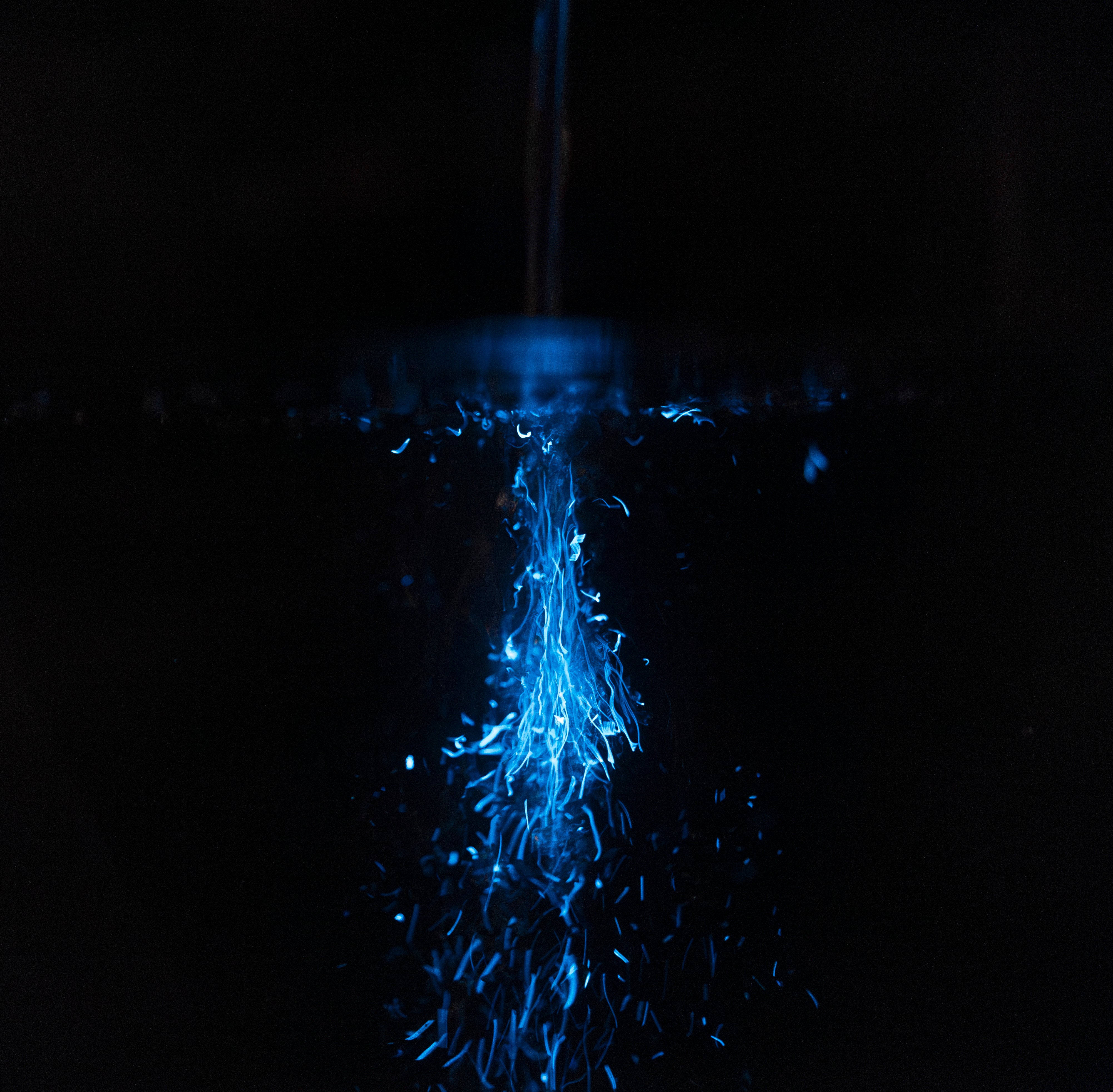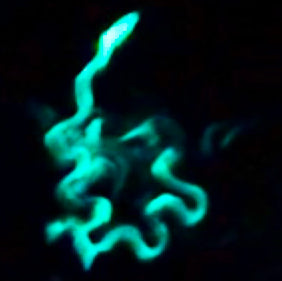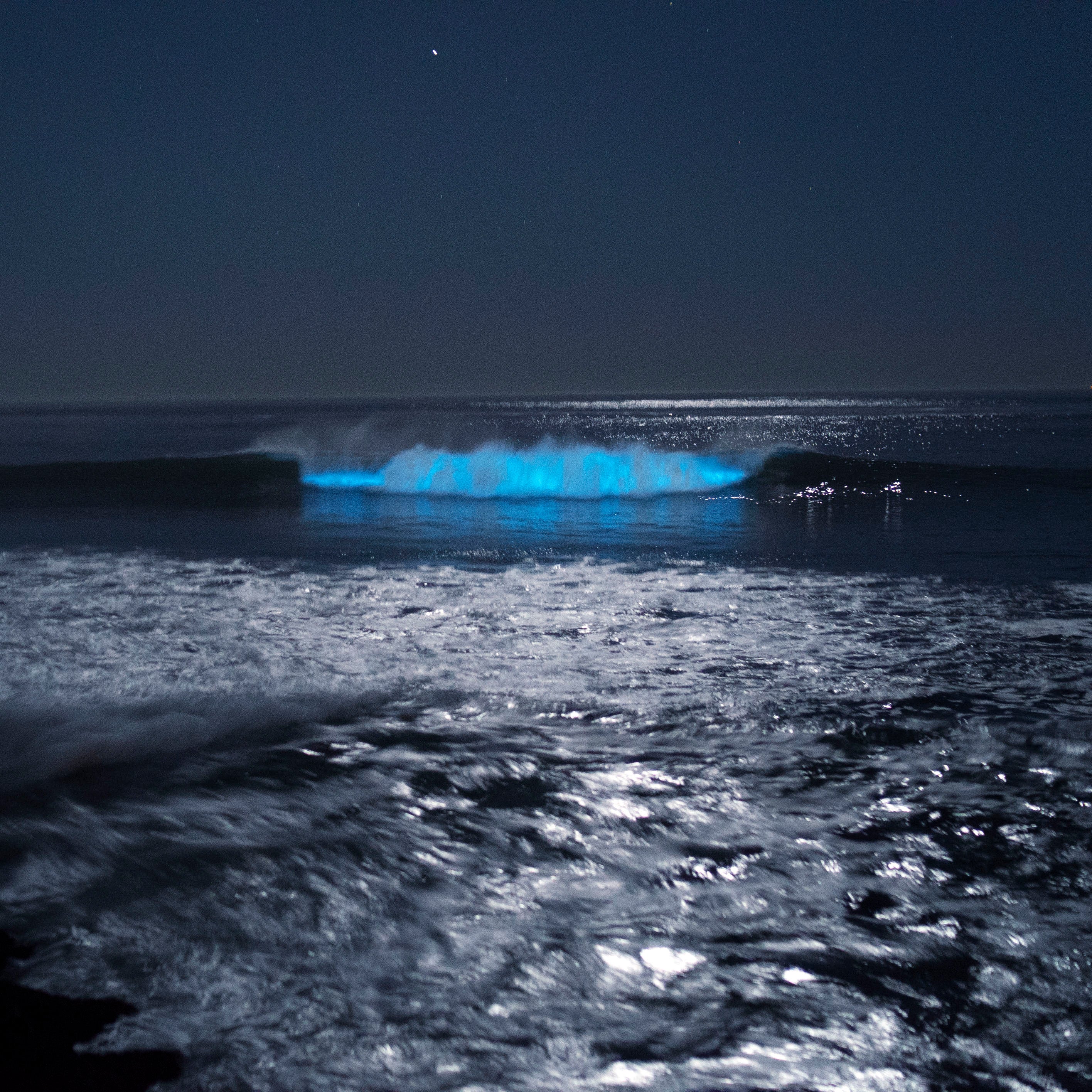Brown University and PyroFarms Collaborate on Wave Motion

Students at Brown University used PyroDinos (bioluminescent phytoplankton) to display wave flow in a tank and photograph/record it, as well as calculate certain constants regarding flow and wave function. @brownengineering

Artists: Venkatsai Bellala, Morgan Holstine, Hannah Jeon , Fiona Liu, Gaurav Rathore
Though composed of mere specks, Vincent van Gogh’s infamous “Starry Night” is anything but stagnant, instead being perpetually characterized by motion. In our project, we bring this motion to life by using dinoflagellates, pointillistic phytoplankton that freckle their surroundings with light when stirred. Our images and demonstration seek to visualize dynamic flows of water, capturing fleeting feelings of vastness through the tiniest of organisms.

A tabletop scale internal wave generator was constructed as part of this project to generate controlled water waves for shear loading of the bioluminescent phytoplankton, causing them to fluoresce in the dark. A 10 gal aquarium tank two-thirds filled with water serves as the medium for wave generation. A servo motor controlled by an Arduino Uno - via a 3D printed crank arm assembly - interfaces with a “pusher wall” constructed from an 0.25” thick acrylic sheet. Controlled oscillations of the servo are used to move the pusher wall, generating a wave. The pusher wall pivots on a clay rail molded and baked from Sculpey modeling clay. A custom, triangular topography was constructed using 0.25" thick acrylic sheets and hot glue, and secured to the bottom of the tank with velcro. Topographies can also be swapped out to simulate different undersea land masses such as shorelines, seamounts, and undersea ridges, aiding in visualization of wave interactions with land masses. However, only one topography was constructed and evaluated for this project in order to streamline its scope.

The characteristics and behavior of the wave generated by the wave generator is dependent on the motion profile of the pusher wall. Specifically, adjusting the total distance the servo motor turns (the “wave angle”) and the speed at which it turns (controlled via a delay before advancing to the next position, the “wave delay”) is observed to alter the amplitude, frequency, wavelength, and other properties of the wave.
M&M PyroFarms Products Used:





Comments